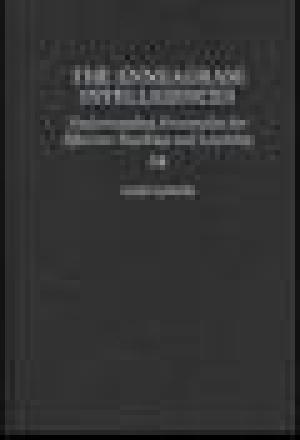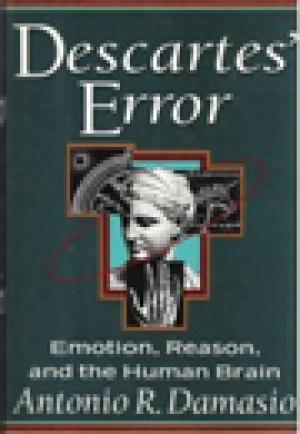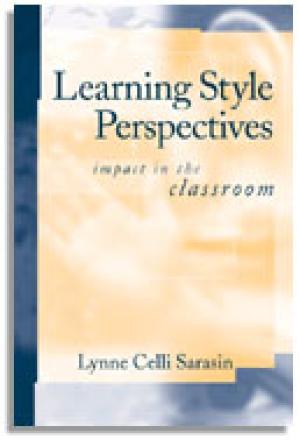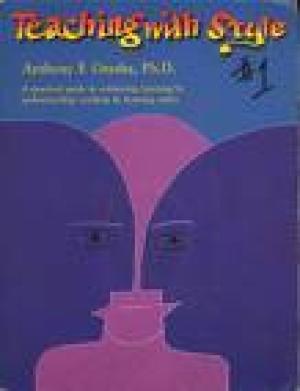Resources
Social scientists generally agree that different cultures have different cognitive styles. New educational models which operate within a multicultural framework are necessary. As a result, traditional approaches to training educators must be adjusted if minority groups are to enter teacher education programs.

First taught in the United States in 1971, the Enneagram is now used in counseling settings, corporations, university classrooms (including Stanford Business School) and other educational institutions. The Enneagram system is a model of human development which describes nine patterns of personality. Each type is distinct with its own point of view and focus of attention based on nine psychological strategies. Janet Levine has analyzed the system and refined it for use by educators and students in the quest to facilitate teaching and learning. (From the Publisher)

Since Descartes famously proclaimed, “I think, therefore I am,” science has often overlooked emotions as the source of a person's true being. Even modern neuroscience has tended, until recently, to concentrate on the cognitive aspects of brain function, disregarding emotions. This attitude began to change with the publication of Descartes' Error in 1995. Antonio Damasio—“one of the world's leading neurologists” (The New York Times)—challenged traditional ideas about the connection between emotions and rationality. In this wondrously engaging book, Damasio takes the reader on a journey of scientific discovery through a series of case studies, demonstrating what many of us have long suspected: emotions are not a luxury, they are essential to rational thinking and to normal social behavior. (From the Publisher)
In instructional design for higher education, it is important to the success of all students to take into account the differences in individual learning styles. Research indicates that different student populations have characteristically different approaches to learning and that teachers can use patterns of effective practice to foster success across cognitive styles. (Author/MSE)

Every teacher wants to improve teaching effectiveness, and a good place to begin is by understanding the various ways students perceive and process information. Learning Style Perspectives addresses the learning needs of the students, taking into consideration individual preferences for absorbing and retaining material in an auditory, visual, or tactile manner. Lynne Celli Sarasin gives an overview of major theorists and synthesizes those theories into an approach to teaching which is easily applied in any college or university classroom setting. The characteristics of auditory, visual, and tactile learners are described along with appropriate teaching techniques, student reactions, and evaluation of each style of learning. Includes easily referenced charts of descriptors, teaching strategies, and student behaviors. (From the Publisher)

Practical Grasha never strays from showing readers how the content applies to them and their teaching. Comprehensive The book takes the reader on a journey that includes an understanding of the elements of teaching and learning styles; the need for discovering Who am I as a teacher? and What do I want to become?; personal change processes in teaching; exploring one's philosophy of teaching; and an integrative model for selecting instructional processes that are keyed to different blends of the Expert, Formal Authority, Personal Model, Facilitator, and Delegator styles of teaching and the Independent, Avoidant, Collaborative, Dependent, Competitive, and Participant learning styles. Creative Written to integrate the involvement of a workshop with the information of a text, Teaching With Style captures and holds our attention. Throughout each of the eight chapters, a variety of self-reflection activities - including the Teaching Styles Inventory, Grasha-Riechmann Student Learning Style Scales, Metaphors We Teach By Questionnaire, inventories of Psychological Type, Theoretical and HIstorical Assumptions About Teaching, and numerous checklists - help faculty motivate learners, promote critical thinking, encourage active learning and retention, and develop self-directed learners. Scholarly Provides citations to more than 200 works by researchers and practitioners across disciplines. (From the Publisher)

Harvard psychologist Howard Gardner has been acclaimed as the most influential educational theorist since John Dewey. His ideas about intelligence and creativity - explicated in such bestselling books as Frames of Mind and Multiple Intelligences (over 200,000 copies in print combined) - have revolutionized our thinking. In his groundbreaking 1983 book Frames of Mind, Howard Gardner first introduced the theory of multiple intelligences, which posits that intelligence is more than a single property of the human mind. That theory has become widely accepted as one of the seminal ideas of the twentieth century and continues to attract attention all over the world. Now in Intelligence Reframed, Gardner provides a much-needed report on the theory, its evolution and revisions. He offers practical guidance on the educational uses of the theory and responds to the critiques leveled against him. He also introduces two new intelligences (existential intelligence and naturalist intelligence) and argues that the concept of intelligence should be broadened, but not so absurdly that it includes every human virtue and value. Ultimately, argues Gardner, possessing a basic set of seven or eight intelligences is not only a unique trademark of the human species, but also perhaps even a working definition of the species. Gardner also offers provocative ideas about creativity, leadership, and moral excellence, and speculates about the relationship between multiple intelligences and the world of work in the future. (From the Publisher)